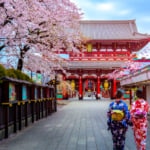Name: Hallstatt
Address: Hallstatt 4830, Austria
Official/Related Website: https://goo.gl/eCykk0
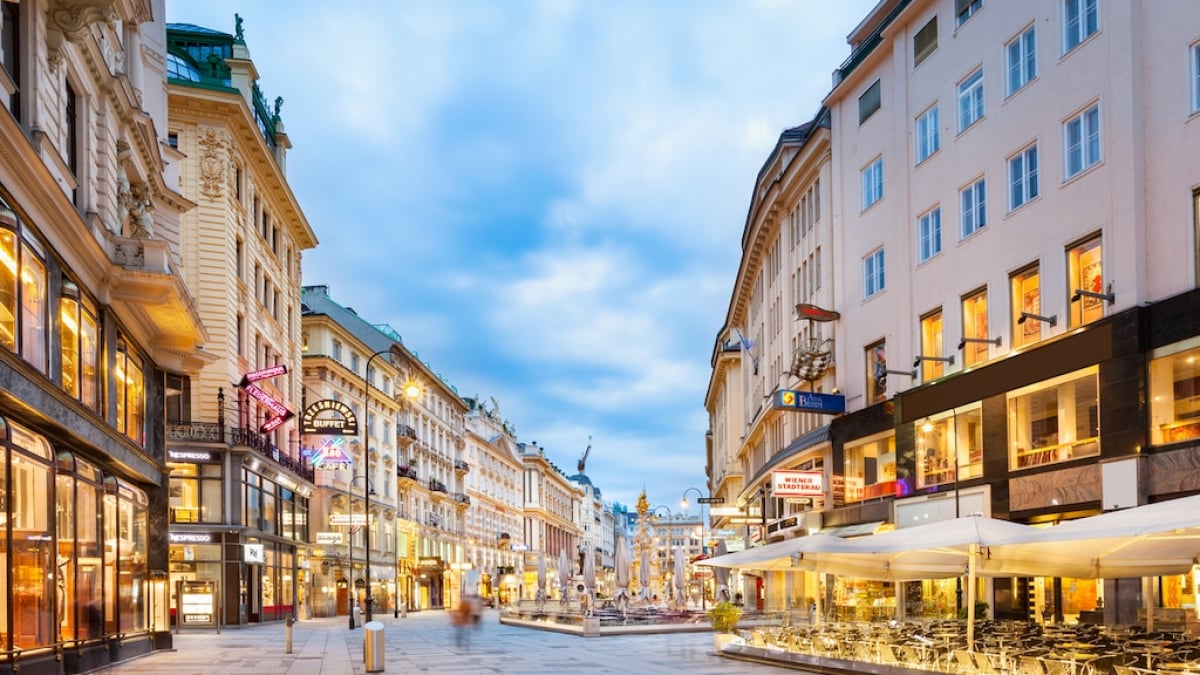
A Land of Art and Culture! Discover 8 Must-Visit Attractions in Enchanting Austria
Austria, known as the land of art and culture, is home to numerous cultural and UNESCO World Heritage Sites, including the world-famous musical capital, Vienna. Strategically located in the heart of Europe, Austria has long been a crossroads for many nations, leading to a rich history influenced by a blend of diverse cultures.
At the same time, Austria is blessed with breathtaking natural beauty. The Austrian Alps, particularly in the Tyrol region, are renowned for their lush forests, crystal-clear lakes, and scenic landscapes that offer countless opportunities for nature lovers.
In this article, we’ve carefully selected 8 must-see tourist destinations in Austria—iconic spots you absolutely shouldn't miss when visiting this captivating country.
table of contents
[x] close
A Land of Art and Culture! Discover 8 Must-Visit Attractions in Enchanting Austria
1. Hallstatt
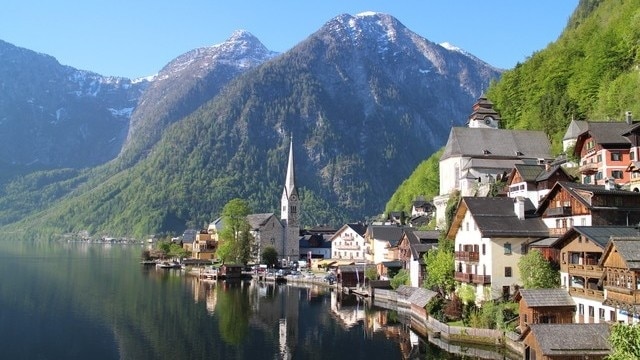
Recognized as a UNESCO World Heritage Site, Hallstatt is often hailed as “the most beautiful lakeside village in the world.” If you’ve ever flipped through a travel brochure or a magazine, chances are you’ve come across this postcard-perfect view. The iconic Hallstatt Lake, which even appeared in the movie The Sound of Music, features a breathtaking scene where the lake, mountains, and church buildings come together in harmony.
Although it's a bit far from Vienna, Austria’s capital and the main hub for tourists, the journey is well worth your time. From Vienna West Station, take a train for approximately 4 hours and get off at Hallstatt Station. Note that the station is located on the opposite side of the lake from the town, so you’ll need to take a ferry—which offers its own stunning views—to reach the village.
Hallstatt is home to only a few hundred residents, making it more of a village than a city. However, there are over 100 hotels and B&Bs available, so even travelers who can’t do a day trip from Vienna can enjoy a relaxed overnight stay.
2. St. Stephen’s Cathedral (Vienna)
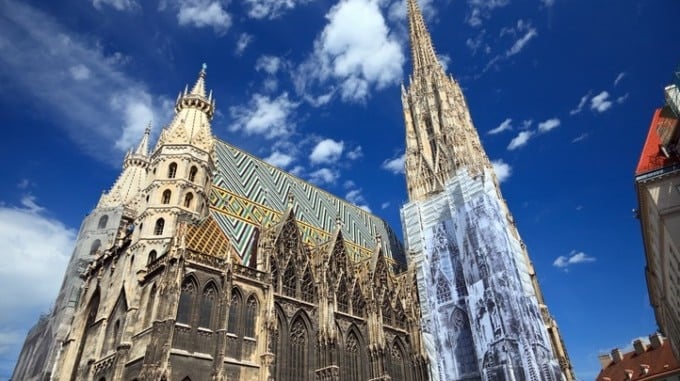
Located in the heart of Austria's capital, Vienna, St. Stephen’s Cathedral (Stephansdom) stands as the city's most iconic symbol. It is nestled within the Historic Centre of Vienna, which was designated as a UNESCO World Heritage Site in 2001.
In addition to being the burial site of the Habsburg dynasty's emperors, this cathedral is also famous as the place where the legendary composer Mozart held both his wedding and funeral ceremonies. With its striking Gothic architecture, the cathedral is home to the third tallest church tower in the world—the South Tower, which stands at 136 meters. Construction of this impressive tower began in the mid-13th century and took around 65 years to complete. Visitors can climb a portion of this tower by stairs and experience a breathtaking view while absorbing the cathedral’s centuries-old atmosphere.
You can also access the 66-meter-tall North Tower via an elevator. Notably, in 2008, Sarah Brightman performed a concert inside this cathedral, which was broadcast worldwide. St. Stephen’s Cathedral is a must-visit historic site in Vienna, offering free admission and a powerful glimpse into Austria’s cultural and architectural legacy.
Name: St. Stephen’s Cathedral
Address: Stephansplatz, 1010 Wien, Austria
Official Website: http://www.stephanskirche.at/index.jsp?langid=11&menuekeyvalue=2
3. Schönbrunn Palace (Vienna)
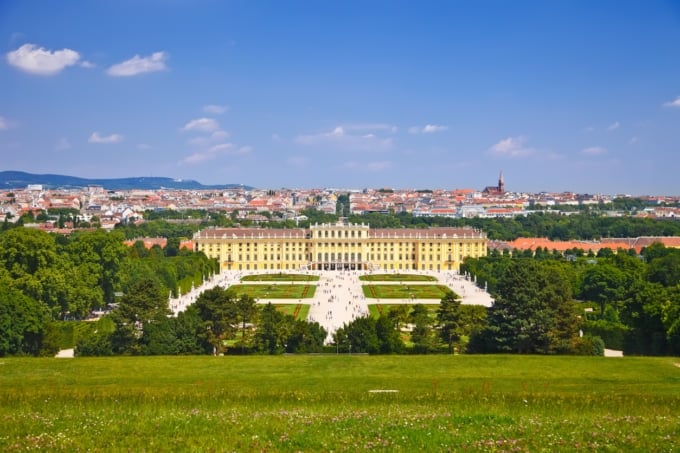
Once the summer residence of the Habsburg emperors, the Schönbrunn Palace is a magnificent Baroque-style palace and one of Austria’s top tourist attractions. Located in Vienna, this architectural masterpiece is not only famous for its opulent interiors but also for its expansive gardens and the world’s oldest zoo, all of which are part of the UNESCO World Heritage Site listing.
The palace boasts over 1,400 rooms, with 45 rooms open to the public, offering a glimpse into the splendor of imperial life. Inside, visitors can admire Venetian glass chandeliers, gilded decorations, and the lavish living quarters of Empress Maria Theresa, which vividly reflect the grandeur of the Habsburg dynasty.
Beyond the palace itself, the surrounding gardens are equally awe-inspiring—meticulously maintained and stretching over a vast area that impresses every visitor.
Admission fees vary depending on the specific attractions—such as the palace, gardens, and the zoo. Several combination tickets are available, which offer a better value and allow entry to multiple facilities. It’s a good idea to plan ahead and decide which areas to visit in advance.
Access is convenient via the U4 subway line, getting off at Schönbrunn Station. However, be prepared to walk a lot, as the grounds are quite large!
Name: Schönbrunn Palace
Address: Schönbrunner Schlossstraße, 1130 Wien, Austria
Official/Related Website: https://goo.gl/zwK9uO
4. Historic Centre of Salzburg (Salzburg)
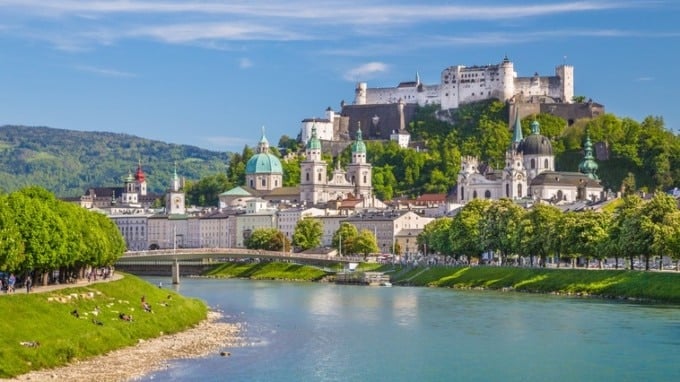
What comes to mind when you hear Salzburg? Is it “the birthplace of Mozart”, “the setting of the musical The Sound of Music”, “a UNESCO World Heritage Site”, or “a city known for its world-famous music festivals”? If you answered yes to all of the above—you’re absolutely right!
Salzburg is a city known by many names and renowned for its beauty and cultural richness. As you walk through the town, you’ll discover a breathtaking cityscape filled with architectural treasures: Baroque, Romanesque, Renaissance, and more. Along with Vienna, Salzburg serves as one of Austria’s top two tourist hubs.
The UNESCO World Heritage-listed Old Town of Salzburg boasts iconic landmarks like Mirabell Palace and the Hohensalzburg Fortress, offering an unforgettable sightseeing experience filled with charm and history.
You can reach Salzburg from Vienna by train in about 2.5 hours or fly directly to Salzburg Airport (also known as W. A. Mozart Airport) via Vienna, major German cities, or other key European hubs.
Name: Historic Centre of Salzburg
Address: Salzburg, Salzburg, Austria
Official/Related Website: http://www.salzburg.info/ja
5. Historic Centre of Graz (Graz)
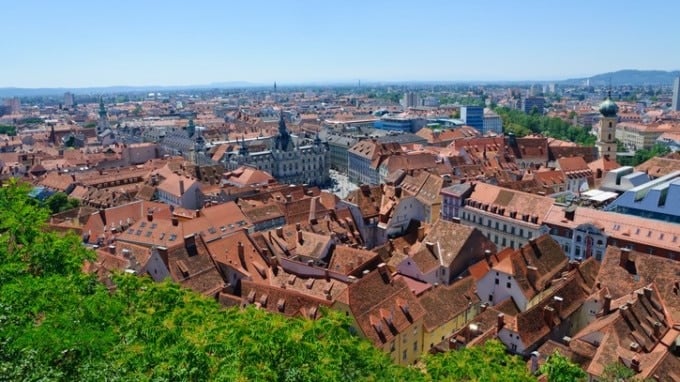
Graz, the capital of Styria and Austria’s second-largest city, is home to one of Europe’s most extensive and best-preserved historic districts. In 1999, the Historic Centre of Graz was inscribed as a UNESCO World Heritage Site. Remarkably, the city was never a battlefield, allowing its charming medieval architecture to survive intact. Many of its centuries-old buildings are still in active use today.
Atop the gently sloping Schlossberg hill, you’ll find the city’s iconic Clock Tower (Uhrturm), offering a breathtaking view of the medieval rooftops that define Graz’s skyline. Just outside the Old Town lies another UNESCO World Heritage treasure—Eggenberg Palace.
With its rich cultural heritage and historical depth, Graz is a must-visit for both Austrian and international travelers. Numerous accommodations can be found near the main train station and within the Old Town. Graz is also accessible as a day trip from Vienna, just 2.5 hours away via express train.
Address: Graz, Styria, Austria
Official/Related Site: https://goo.gl/h6nzo4
6. Wachau Valley (Lower Danube Region)
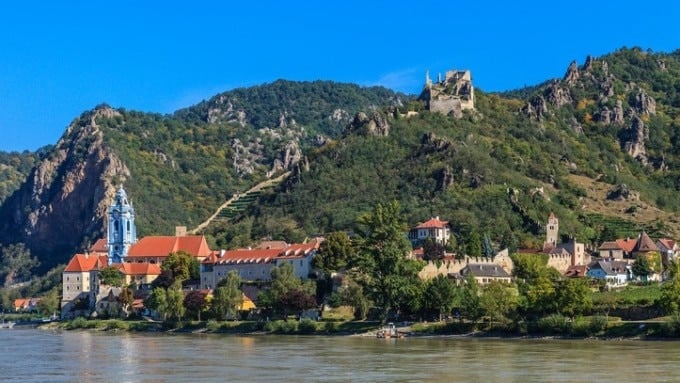
The Danube River, famously celebrated in song, stretches about 3,000 kilometers from Germany to the Black Sea. Among its many scenic highlights, the Wachau Valley is often considered one of the most breathtaking.
This area features a wide expanse of gently flowing river through rolling hills and lush landscapes. A river cruise here is a must, offering stunning views of historic castles and ancient monasteries rising beyond vineyards perched on scenic hilltops. This picturesque stretch of the Danube is unlike any other and has rightfully earned a spot on the UNESCO World Cultural Heritage list.
Cruise ships operate daily from mid-April to late October. A popular route runs from Melk—a charming town about an hour from Vienna West Station by express train—downriver to Krems, taking around 2 hours. Many travelers return by train, although round-trip cruises (about 5 hours total) are also available. During winter, while cruises are suspended, you can still enjoy views of the river via scenic bus routes that connect the two towns.
Attraction Name: Wachau Valley
Official/Related Website: https://goo.gl/pwJtLy
7. Semmering Railway (Semmering)
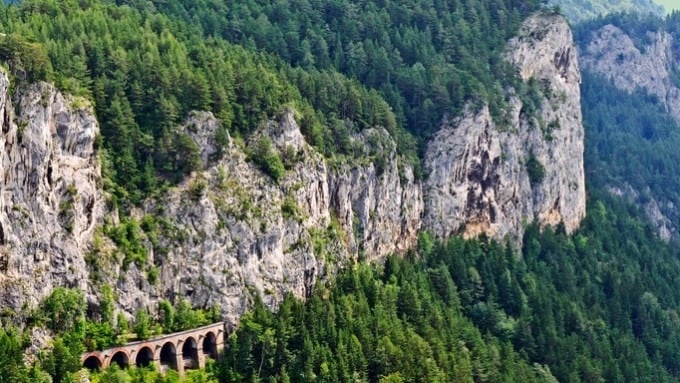
Opened in 1854, the Semmering Railway holds the distinction of being the world’s first mountain railway. Recognized as a UNESCO World Heritage Site for its pioneering engineering, it continues to serve passengers to this day. Located not far from Austria’s capital, Vienna, the railway offers a unique opportunity to experience a scenic journey through the Austrian Alps, making it a must-try for any traveler.
From Vienna, take a train heading toward Graz, and after traveling approximately 80 kilometers, you’ll arrive at Gloggnitz, a quaint mountain station that serves as the starting point of the Semmering Railway. From there, the line stretches about 40 kilometers to Mürzzuschlag. While riding the train, you might miss the historical stone tunnels and iconic double-arched bridges that define this route. To fully enjoy these sights, consider taking one of the hiking trails that run alongside the tracks, allowing for leisurely exploration and photo opportunities. This blend of rail travel and alpine hiking is a special experience unique to Austria.
Name: Semmering Railway
Official/Related Website: https://goo.gl/TUpWuU
8. Nordkette Mountain Range (Innsbruck: Nordkettenbahn)
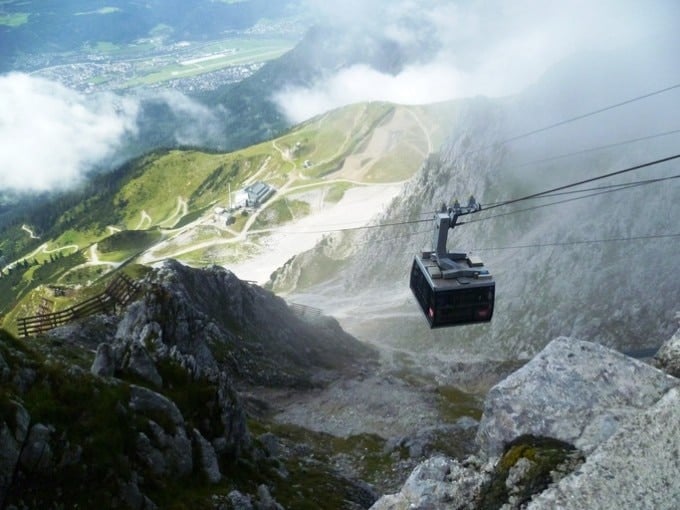
Innsbruck, the capital of Tyrol and a city, sits at the foot of the impressive Nordkette mountain range. This stunning backdrop rises just behind the city and offers one of the most accessible alpine adventures in Austria.
While Innsbruck itself is rich in history with its medieval old town and iconic landmarks, one of the must-visit experiences is the Hafelekar summit (approx. 2,300 meters above sea level), which can be reached in just 20 minutes from the city center. On a clear day, you'll be rewarded with panoramic 360-degree views stretching all the way to the Italian Alps. Below your feet, the entire city of Innsbruck and the shimmering Inn River unfold in a scene worthy of a postcard.
The connection between the city and the alpine heights over 2,000 meters is made possible by the state-of-the-art Nordkettenbahn system, which includes a modern funicular and two cable cars operating in three segments. Collectively known as Nordkettenbahn, this route offers one of the quickest and most scenic transitions from a charming alpine city to awe-inspiring mountain views.
Whether you're drawn to Innsbruck’s cobbled streets or the raw beauty of the Alps, the Nordkette mountain range is a destination you shouldn’t miss on your Austria travel itinerary!
Name: Nordkette Mountain Range (Innsbruck: Nordkettenbahn)
Official Website: http://www.nordkette.com/en/home.html
◎ Summary
Looking at it this way, it’s truly impressive how many UNESCO World Heritage Sites Austria has! Austria is clearly a destination packed with must-see attractions. Perhaps this is due to its long and prosperous history, including the 650-year reign of the Habsburg dynasty and its past status as one of Europe’s five great powers—alongside Britain, France, Germany, and Russia—up until World War I. Austria’s rich cultural and historical heritage makes it a top travel destination in Europe.
RELATED ARTICLES
REGIONS
CATEGORIES
FEATURED ON Austria
-
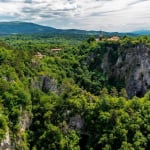
Introducing All 5 World Heritage Sites in Slovenia! Explore the Magnificent World Heritage of This Small Country
-
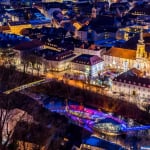
Austria’s Proud World Heritage Site! The Historic Centre of Graz and Eggenberg Palace
-

What is code sharing (joint operation), a term often heard when flying? Use it smartly to get cheap tickets!
-
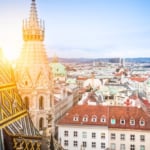
Searching for souvenirs in historic Austria! 5 recommended shopping spots
-
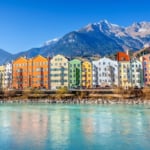
20 must-see attractions in the historic city of Innsbruck loved by Empress Maria Theresa
MOST POPULAR ON Austria
-
 1
1Doha: Must-see Attractions in the Capital of Qatar
-
 2
2Toronto: 10 Things to do in this Picturesque Canadian City
-
 3
3Amarillo: A City Famous for It’s Amazing Canyons, Great History and Music
-
 4
4South Korea: Dazzling Scenery, Rich Culture and Fascinating History
-
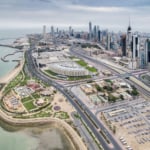 5
5Kuwait: A Country in Middle East Asia Famous for Hot Sand Dunes and Stunning Cityscape


